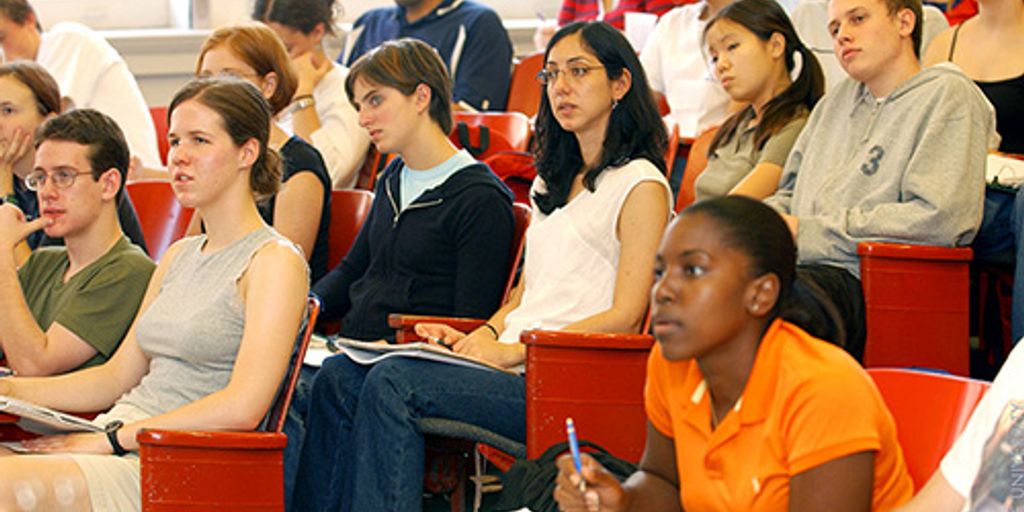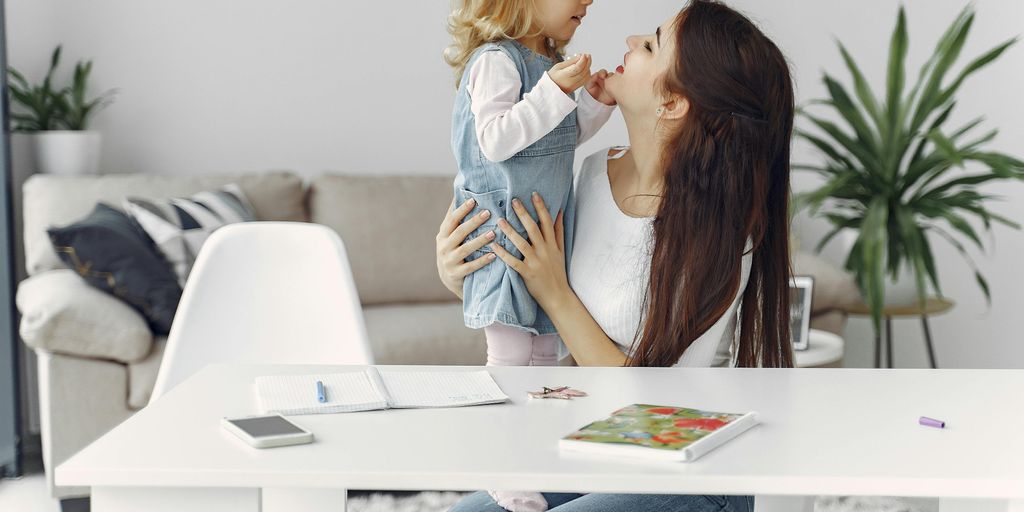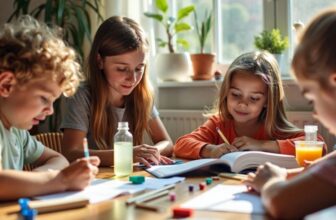
Learning activities can take place anywhere, not just at school. As a parent, you are your child’s first teacher, and the home environment offers ample opportunities for educational fun. However, learning doesn’t always have to feel like a classroom lesson. By presenting educational activities as enjoyable and engaging, you can spark your child’s enthusiasm for learning new things. Here are the top 10 educational activities for kids to do at home.
Key Takeaways
- Educational activities at home can be both fun and informative, creating a stimulating learning environment.
- A scavenger hunt can make learning interactive and exciting.
- The MentalUP Educational Platform offers a variety of games and exercises to boost cognitive skills.
- Simple science experiments can ignite curiosity and a love for exploration.
- Cooking and baking can teach valuable life skills such as measuring, following instructions, and understanding ingredients.
1. Scavenger Hunt
A scavenger hunt is a classic and exciting activity that can be both fun and educational for kids. It encourages them to explore their surroundings and enhances their observation and naturalistic skills. Playing scavenger hunt is a great way to teach your kids about nature and the environment. Make sure to create a list consisting of a variety of items to search for. Your kid will be excited to find and collect them.
Benefits of Scavenger Hunts
Scavenger hunts are highly beneficial for kids’ development. They help improve problem-solving skills, expand spatial awareness, and promote teamwork. Additionally, they can be tailored to fit different themes, making them versatile for any occasion.
How to Set Up a Scavenger Hunt
- Choose a location: This could be your backyard, living room, or even the neighborhood.
- Create a list of items: Include a mix of easy and challenging items to find.
- Provide clues: These can be in the form of riddles or simple descriptions.
- Set rules: Decide on a time limit and any other rules to keep the game fair and fun.
Looking for fun and educational activities? Explore our scavenger hunt ideas for kids, perfect for home, classroom, or travel!
Variations of Scavenger Hunts
- Backyard Treasure Hunt: Hide items like toys, snacks, or small trinkets around your backyard.
- Scavenger Hunt with Toys: Start with a selection of toys of various sizes and shapes, then hide them in a room or yard for the kids to find.
- Nature Scavenger Hunt: Create a list of natural items like leaves, rocks, and flowers for kids to find and collect.
2. MentalUP Educational Platform
MentalUP is a scientifically designed learning app that includes the best online educational activities for kids. With over 150 educational activities and 240 PE games, MentalUP offers a holistic approach to children’s mental and physical development.
Engaging Games and Activities
MentalUP boasts over 150 engaging games, tests, and educational activities for kids of all ages. Additionally, with more than 240 fitness exercises, it’s an ideal tool to help keep your child active.
Expertly Designed
The app has been created by a team of pedagogical experts, academicians, and educators, who have used their expertise to develop a platform that provides kids with the most fun and educational learning experience possible.
Progress Tracking
MentalUP also offers parents and teachers five detailed analysis tools to track their child’s progress and ensure they stay on course for success.
Don’t let your child’s free time go to waste – make it productive and enjoyable with MentalUP!
3. Science Experiments
Kids are naturally curious and born into this world as scientists. Continue nourishing their curiosity by doing experiments at home! There are many science experiments you could do using everyday things found at your house. They are not only safe, but will sure keep your kid’s interest.
Easy Experiments to Try
-
Avocado Tree: One of the easiest science experiments for kids. All you need to start your own avocado tree is an avocado pit, a jar, some toothpicks, and water. With a little patience, you’ll see roots and a stem sprout.
-
Baking Soda and Vinegar Volcano: This classic experiment helps kids learn about chemical reactions. Simply combine baking soda and vinegar in a container and watch the eruption!
Benefits of Science Experiments
- Enhances problem-solving skills
- Encourages creativity
- Provides hands-on learning opportunities
Simple scientific activities that don’t involve much work on your side but are packed with exciting learning possibilities will be enjoyed by preschoolers. Your children can do easy and fun scientific projects.
Resources for More Experiments
4. Baking/Cooking
Baking and cooking are fantastic activities to do with kids at home. These cooking activities for kids are easy and quick. Not only do you get a yummy treat after, but they also learn about basic math and communication skills. It boosts their confidence, creativity, and promotes healthy eating habits!
Benefits of Baking/Cooking with Kids
- Enhances basic math skills through measuring ingredients.
- Encourages communication and teamwork.
- Promotes creativity and confidence.
- Introduces healthy eating habits.
Simple Recipes for Younger Kids
If your kids are younger, you can make simple recipes, like cookies or pizza, together or ask them to help with meal preparation. This is a great way to get them involved in the kitchen and make learning fun.
Complex Recipes for Older Kids
To turn cooking and baking into educational activities for older kids, you can choose more complex recipes, like lasagne or cheesecake, that your kids might be interested in. This offers developmentally appropriate learning opportunities that are both fun and educational.
Cooking and baking are great skills to have throughout life. When teaching a child to bake and cook, they are also learning math and science skills as well. Fractions are more fun to learn about when you are mixing ingredients together and you get a tasty treat at the end.
5. Puzzle Race
Turn puzzle-solving into one of the competitive hands-on games. This activity not only enhances problem-solving skills but also adds an element of excitement.
Materials Needed
- Two identical puzzles
- Timer
How to Do It
- Divide participants into two teams.
- Start the timer and see which team completes their puzzle first.
Puzzle races are a fantastic way to combine fun and learning, making them one of the top choices for indoor games.
Related Reading
For more brain-teasing fun, check out the best math puzzles for kids to improve cognitive abilities.
6. Nature Collage
Creating a nature collage is a fantastic way for kids to connect with the outdoors and get creative. This activity encourages children to explore their surroundings and use their findings to create beautiful art.
Materials Needed
- Cardboard or poster board
- Natural items (leaves, twigs, flowers, etc.)
- Glue
How to Do It
- Go on a nature walk and collect various items.
- Arrange the collected items on the cardboard.
- Glue them in place to create a beautiful nature-inspired collage.
Encourage children to connect with nature through these fun learning activities for kids. A nature collage allows kids to explore their surroundings and use their findings to create beautiful art.
Benefits
- Enhances creativity
- Promotes outdoor exploration
- Teaches respect for the environment
7. Fraction Pizza Party
Teach fractions in a delicious way by organizing a pizza party where kids can learn about halves, quarters, and eighths.
Materials Needed
- Paper plates
- Colored paper or felt (red, yellow, brown) to represent different pizza toppings
- Scissors and glue
How to Do It
- Cut the paper plates into halves, quarters, and eighths.
- Ask kids to decorate each ‘slice’ with paper toppings.
- Mix and match the slices to create whole pizzas, discussing the fraction each slice represents.
Slice into Fraction Games!
Compare and order the fractions in ascending order with this fun and interactive, pizza-themed deck. Great for review, math centers, and more.
This activity not only teaches kids about fractions but also enhances their creativity and fine motor skills.
For an extra challenge, try Tony Fraction’s Pizza Shop, a free, fun, online game that reinforces fraction identification, reduction, and equivalent fractions. Kids play the role of Tony, making pizzas and learning fractions along the way.
8. Magnetic Fishing Game

The Magnetic Fishing Game is a delightful and educational activity that combines creativity with play. Kids can create their own fish and then “fish” for them using a magnetic fishing rod. This game is perfect for enhancing fine motor skills and hand-eye coordination.
Materials Needed:
- Paper or cardboard
- Markers or crayons
- Paper clips
- String
- Stick or dowel
- Small magnet
How to Do It:
- Draw and cut out fish shapes from paper or cardboard.
- Attach a paper clip to each fish.
- Tie a string to the stick or dowel and attach the magnet to the other end.
- Scatter the fish on the floor and use the magnetic fishing rod to catch them!
This activity offers a hands-on experience that combines craft with play. Kids can create fish and then “fish” for them using a magnetic fishing rod.
This game is perfect for enhancing fine motor skills and hand-eye coordination.
9. Bead Counting and Sorting
Bead counting and sorting is an excellent activity for teaching counting, sorting by color, and introducing basic addition and subtraction.
Materials Needed:
- A variety of colored beads
- Small cups or containers for sorting
- String (optional, for making bead necklaces or bracelets)
How to Do It:
- Spread out the beads and ask the child to sort them into different containers based on color.
- Once sorted, encourage counting the beads in each container.
- For older children, introduce concepts of addition and subtraction by adding or removing beads from the containers.
- Optionally, use the beads to create necklaces or bracelets, reinforcing counting and pattern-making skills.
Color sorting sensory play gives students hands-on experience, building connections in their brains while they learn through playing!
10. Homemade Playdough
Making playdough at home is a classic hands-on project that kids adore. It’s not only fun to make but also provides hours of creative play. Play dough has immense potential for learning, strengthening fingers for writing, teaching fine motor skills, creativity, and hand-eye coordination. Add some beads to the dough for a fine-motor exercise or get the kids threading beads on lengths of dried spaghetti held in the dough for extra play-value. Kids love getting their fingers into playdough, making it one of the best sensory activities. They can create various shapes like dinosaurs, mushroom houses, or turtles, learning through hands-on experience. Check out our playdough games sheets for more fun ideas. If you don’t have playdough, you can make it in 3 minutes with our easy playdough recipe.
Conclusion
In conclusion, there are countless fun and educational activities that you can do with your kids at home. From science experiments and art projects to educational games and cooking, these activities not only keep children engaged but also stimulate their minds and foster a love for learning. By incorporating these activities into your daily routine, you can create a rich learning environment that encourages curiosity and creativity. Remember, the key is to make learning enjoyable and interactive, so your kids look forward to these activities every day. Happy learning!
Frequently Asked Questions
What are some fun educational activities for kids at home?
Some fun educational activities for kids at home include scavenger hunts, using educational platforms like MentalUP, conducting science experiments, baking or cooking, puzzle races, creating nature collages, having a fraction pizza party, playing magnetic fishing games, bead counting and sorting, and making homemade playdough.
How can I make learning fun for my kids at home?
You can make learning fun for your kids at home by incorporating educational activities into playtime. Use games, hands-on projects, and interactive tasks that are both enjoyable and educational.
What is MentalUP Educational Platform?
MentalUP is an educational platform that offers a variety of fun and interactive games designed to improve cognitive skills such as memory, attention, and problem-solving.
Why are science experiments good for kids?
Science experiments are good for kids because they encourage curiosity, critical thinking, and problem-solving skills. They also make learning about scientific concepts fun and engaging.
How can baking or cooking be educational?
Baking or cooking can be educational by teaching kids about measurements, fractions, and following instructions. It also helps develop fine motor skills and can introduce them to basic chemistry concepts.
What are the benefits of hands-on learning activities?
Hands-on learning activities help children understand concepts better by allowing them to experience and manipulate objects directly. This type of learning can improve retention, foster creativity, and make learning more engaging.






